First off, we can say with all certainty: the tower indeed leans.
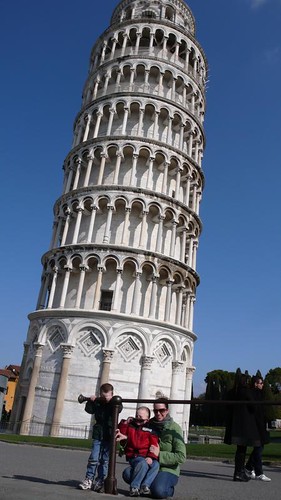
Why didn't they build the foundation deeper than 10 feet? No one seems to know. Funnier still is the view when you look back across the field next to the tower:
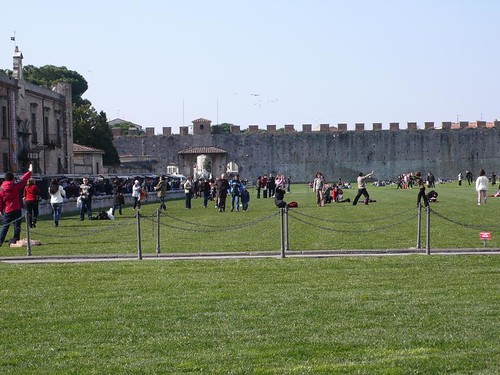
Recognize the poses? Right. Yeah, we didn't do that.
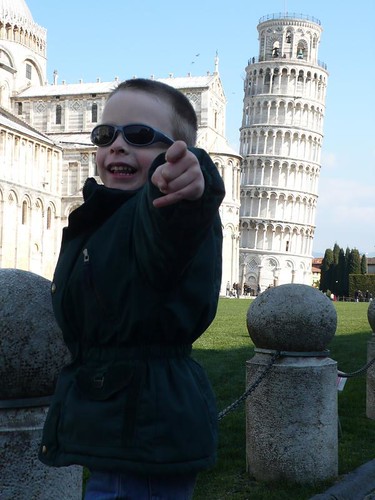
The entire set up is a bit strange. You drive into the city of Pisa and all is normal and fine, then suddenly everything opens up, and there are these wide expanses of grass around several beautiful buildings -- all with at least a slight lean.
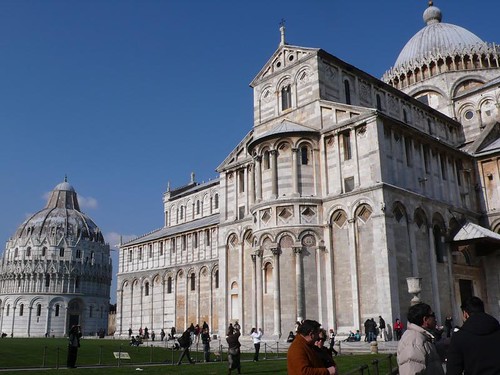
(One would think that after the first enormous, expensive structure began to lean, that they would call it quits on the sandy, unstable ground, but no. Apparently that was no setback for these architects -- the tower was the third of the four great religious edifices.)
The foundation of the tower
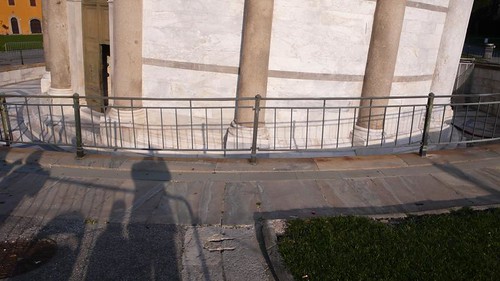
The tower and all of the other buildings are very beautiful, but there was something sad about the fact that the entire place has become a mere tourist trap. It costs at least 5 euro to buy a ticket into EACH of these buildings. The other side of the street is completely lined with little souvenir tents selling plastic and ceramic leaning towers, shirts, bags, and miniature Pinocchio puppets (present at all tourist stops nationwide).
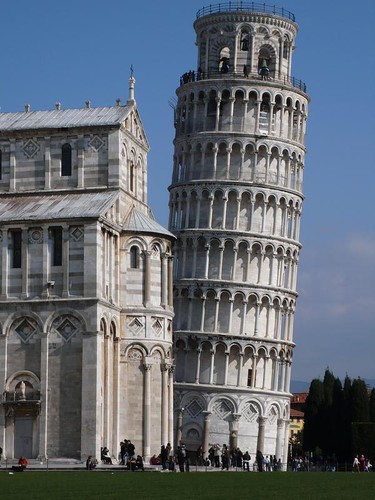
There is controversy over who it was who actually built the tower, but what is known is that the structure began to lean after only the third floor was built. Construction was halted for about 100 years. Giovanni di Simone, an architect, began work on it again in 1272, and built 3 more floors, tilting them in the opposite direction to try to compensate for the already flawed building (thus, it is actually curved).
In 1319 the 7th floor was completed, and then the bell-chamber added in 1372. I'm really not sure why they decided to add a bell tower, as this just adds to the weight at the top, and contributes to the lean.
The tower leans more every year. In January of 1990, it was closed to the public, because it had acquired a lean of 14-1/2 feet of the center line. They took the bells out of the top of the tower and used cables to pull the building in the opposite direction, while removing some of the soil from the raised side. The tower has now been opened back up to the public (supposedly safe for another 300 years), although children under the age of 8 are not allowed inside.
Our boys were sad because they dearly wanted to go up inside of the tower, but the rules are firm. We, obviously, didn't go up either ("Yeah guys, you know about that tower you've been begging to explore? Well, Mommy and Daddy are going to take turns, but you're not allowed". That would have just been cruel.) I'm not much on heights anyway, so I didn't feel like I was missing out.
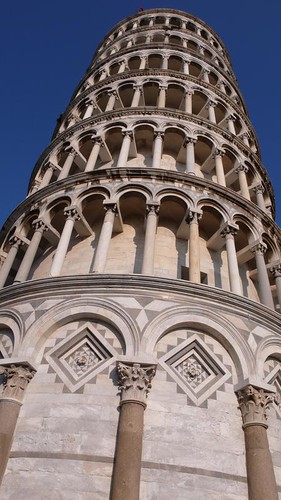
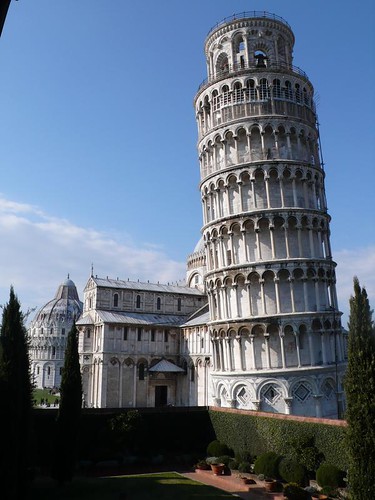
We decided to buy tickets to check out one of the two museums. Very unfortunately, the interior of the museum was simply filled with artifacts that had been displaced from there original places in the Cathedral and Baptistry, which are located a mere several hundred yards away. Not only were the things on display poorly set up, but the walls were an institutional whitewash or brick, and the floors plain tile.
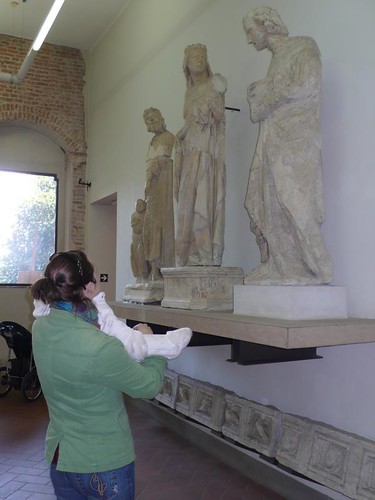
We quickly left this place with a bitter taste in our mouth, and decided that it was time for lunch.
Since our little ones were very hungry by this point, we didn't have time to explore the town for something a little further away from the Piazza dei Miracoli. Instead, we stopped at the first trattoria that we came across, and were surprised to eat a rather delicious meal of pizza, fresh salads, and pasta.
Cured beef, arugula, shaved parmesan
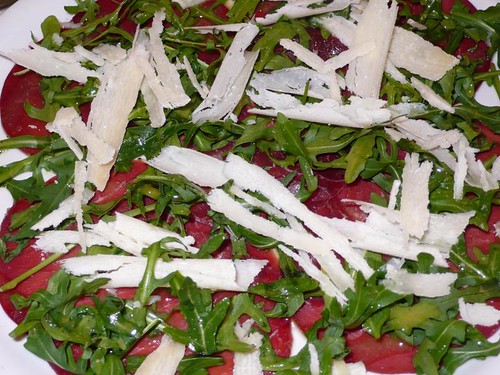
Our overall feeling about Pisa was that the tower is something that's worth seeing, but that's pretty much all there is to the place. I've read online that there is actually more to the city, so maybe we'll go back someday to check it out, but for now, I've had enough. Hey, at least the food was great!
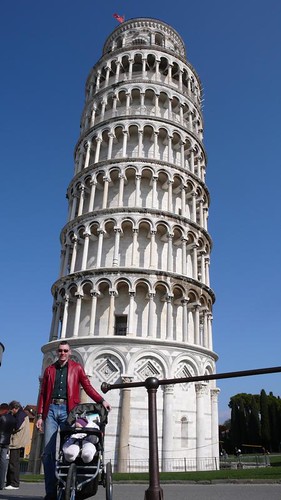
To read a more in depth history on this tower, click through to the Wikipedia article.
Next post: Parma, Maranello and Bologna
Blogged with Flock

No comments:
Post a Comment